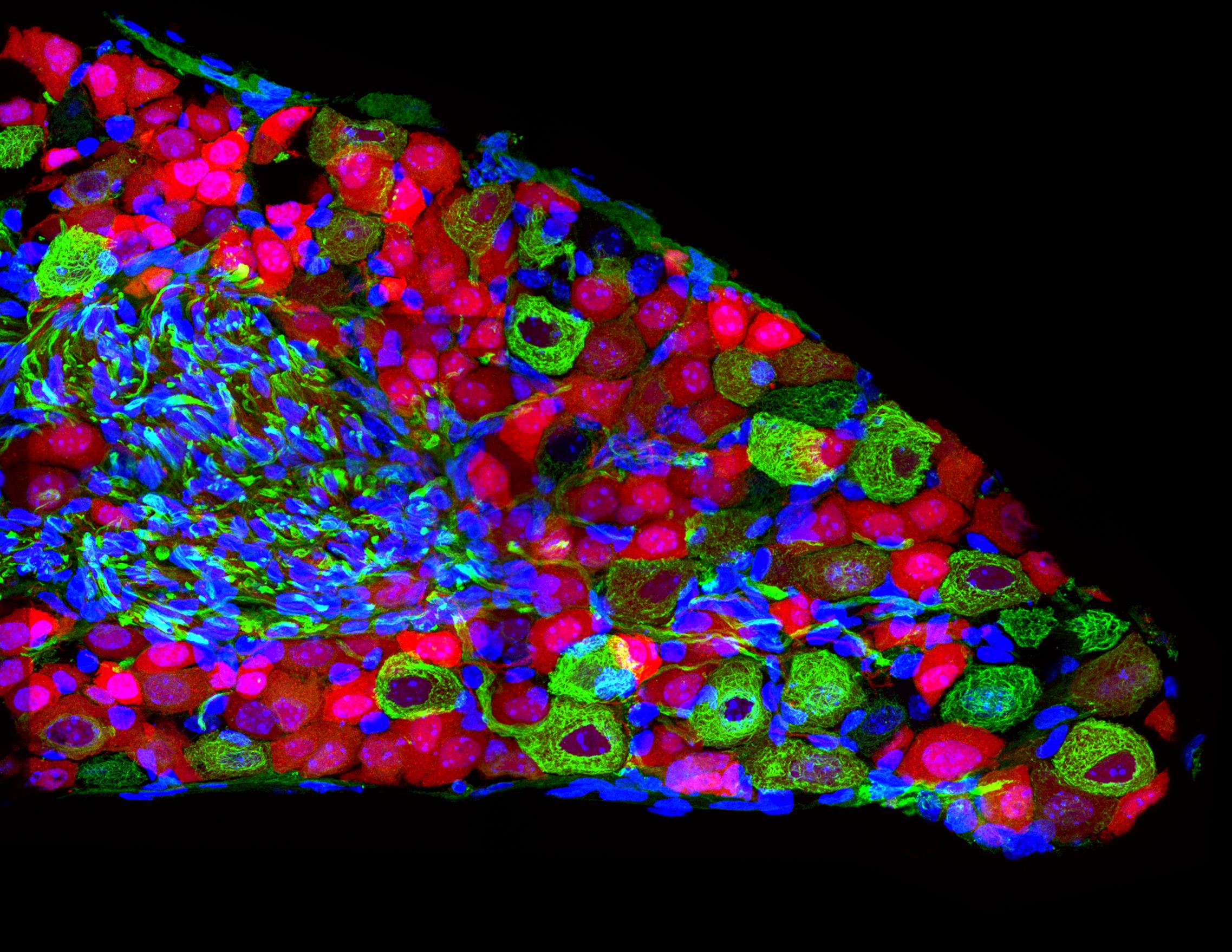The retinal pigment epithelium (RPE) is a single layer of hexagonal-shaped cells that is located between the photoreceptors of the retina and the blood vessels of the choroid, at the back of the eye. The RPE cell layer is critical to vision. The RPE reduces light damage in the eye, regulates the movement of nutrients and waste products into and out of the retina, maintains blood vessels by secreting growth factors, renews the photoreceptors, and is part of the visual cycle.
RPE cells bear the brunt of the damaging environmental factors to which the retina is exposed. By doing so, they help protect and maintain the retina. The primary sources of damage to the retina and RPE comes in the form of light and oxygen.
Light is a source of energy, and can be very damaging to living things. RPE cells, which appear black due to their pigmentation, absorb excess light in the eye. They also “eat”, or phagocytose, the light-sensing region of the photoreceptor cell, the outer segment. When the outer segments of photoreceptors sense light, they are damaged in the process. Outer segments fall off and are eaten by the RPE. When the RPE cells take in those damaged outer segments, they are also taking in damaging free radicals in the process. This is another source of environmental stress they must deal with.
Oxygen is required for metabolism and survival, but exposure to too much oxygen can be toxic. The retina demands a large supply of oxygen to function, because it is a highly metabolic tissue. Much of that oxygen comes from the blood vessels in the choroid. The RPE cells are constantly being exposed to high levels of oxygen in the choroid. This is an additional environmental stress for RPE cells, especially when combined with light energy and free radicals.
To protect themselves against environmental damage, the RPE cells produce high concentrations of anti-oxidants. However, over time the effects of all of this stress can damage the RPE and lead to the onset of age-related vision disease, like macular degeneration and potentially macular telangiectasia type 2.
In MacTel eyes, there appear to be abnormalities in RPE function. The evidence for this comes from examining MacTel eyes that have been donated for research. All of the donated eyes have accumulated subretinal debris. Unlike many of the other characteristic changes that are observed in MacTel eyes, RPE abnormalities are not restricted to the MacTel zone.
The exact nature of the RPE defect has not been decided. The potential role of RPE cells in macular telangiectasia type 2 remains an area of active research.



